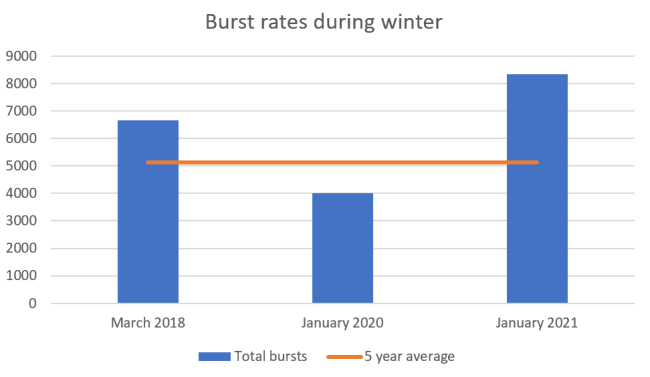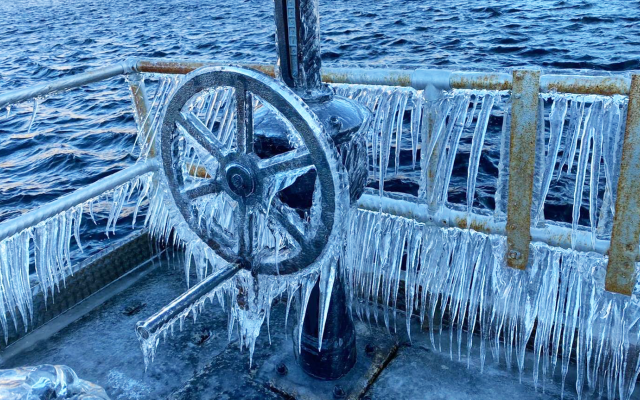Views
Recommendations from an unprecedented winter
In early 2021, something strange was happening beneath the surface of the earth. As temperatures plummeted across the UK, and then steadily rose as warm breezes blew in from the Canary Islands, underground pipes across the UK began to burst at high rates. This is an event known as freeze-thaw.
For the water industry and for our customers, freeze-thaw can be a significant challenge. In March 2018, which was our last major freeze-thaw event, thousands of customers lost access to their water supply. The water industry have learnt lessons and we set about to draft a series of recommendations to improve on the way we manage freeze-thaw.
Three years later and freeze-thaw struck again, posing an opportune moment to reflect on our progress, and further consider how we adapt to extreme weather events. This time, however, customers saw minimal disruption thanks to successful management by the industry.
Unlike in 2018, early 2021 did not bring nationwide deep snow and storms, instead it quietly ushered in freezing temperatures followed by balmy winds from warmer parts of Europe and northern Africa. Early 2021 is unlikely to be remembered for its weather forecast.
For many water companies, early 2021 was actually more challenging than the conditions seen during 2018. You only have to take a look at industry burst-rates (i.e. how many pipes burst) to see for yourself:

Image description: A graph showing the burst rate during March 2018, compared to January 2020 and January 2021 against a 5 year average.
Combine an industry burst-rate that was 25% higher than that seen during winter 2018 with the impact of COVID-19 on our resources, and you are looking at an unprecedented winter.
Thanks in part to the steps taken by water companies to improve their response to freeze-thaw since March 2018, customer impact from this freeze-thaw was minimal. In particular, early warning systems, reprioritisation of staff, stronger communications and excellent incident response across industry played a role.
The learnings from COVID-19 have also played a role. COVID-19 has certainly put the water industry through its paces, but it has also given us new insights into the way that our customers use water, and the way that we manage operational challenges.
As extreme weather events become more common place as a result of the human impact on climate change, we must consider how the water industry adapts to ensure customers continue to receive good service. Our latest report poses several next steps.





